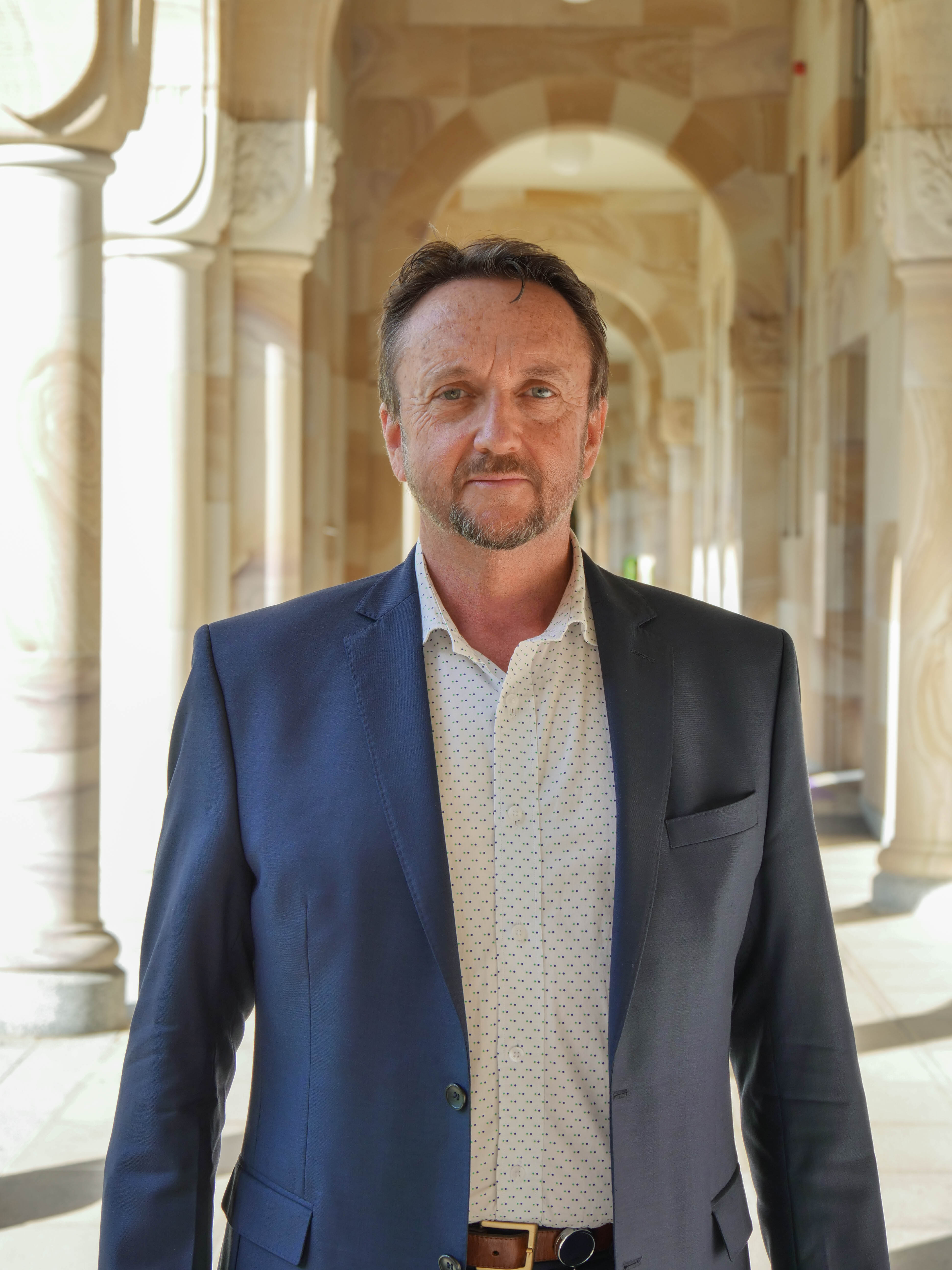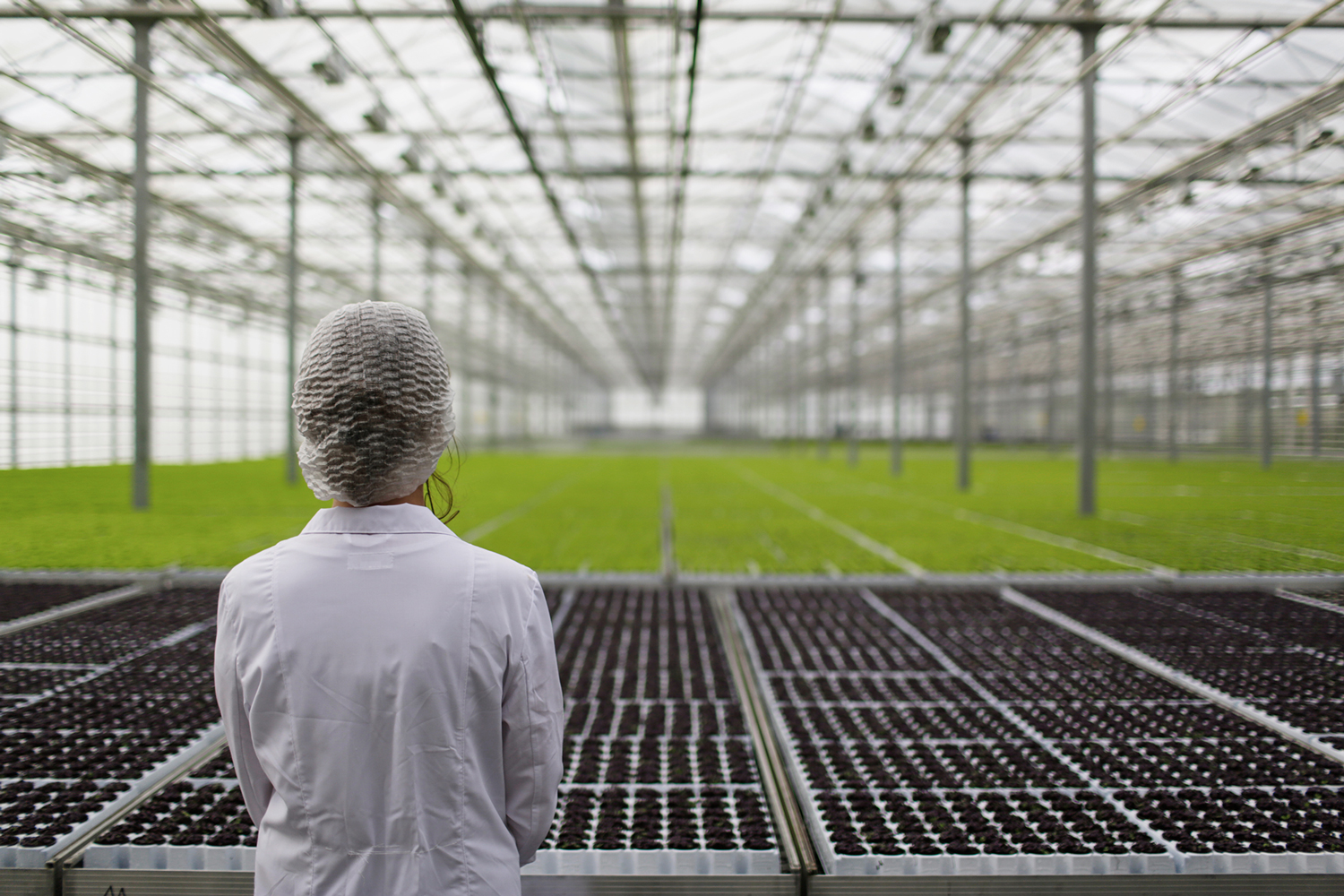Professor Damian Hine plans to build a bridge – a crossing that joins the experience, capacity and potential of Australian agriculture with the national and global investment needed to take Australian farming to new levels of productivity, sustainability, diversity and value.
It sounds – and is – ambitious, but it is the objective of his appointment as Professor of Future Markets and Bioeconomies with the Queensland Alliance for Agriculture and Food Innovation (QAAFI) and the University of Queensland’s Global Change Institute.

Professor Hine is a specialist in the economics of innovation and his goal is to get new funding into the agricultural sector.
He says achieving this means better connecting research ‘push’ with market ‘pull’ by attracting investment into industry-building partnerships that link agricultural science, farming, and new agriculture value chains.
“There is patient capital with sufficient risk appetite ready and waiting – institutional and philanthropic investment, and sovereign wealth funds, for example – wanting to invest in innovative agriculture. And we have excellent industries and excellent science that is looking for this support. The gap in between them is what we have to bridge.”
Professor Hine says this requires innovations and new business models that represent strong value propositions for investors and for growers.
He cites the University and QAAFI’s work on protected cropping as one example of the type of opportunities envisaged.

Farming redefined
“With protected cropping in large-scale controlled environment facilities, we’re not just talking about growing human food more securely and productively, but also crops that are feedstock for nutraceuticals and pharmaceuticals, for supplements, and high-value inputs into industrial processes,” Professor Hine said.
“These represent big potential uplifts in value, but we first have to build the value chains to get these products and applications where they are needed – and that means bringing the science and the investment together as early in the development cycle as possible.
“We’re talking, eventually, billions of dollars, but our target over the next few years is to generate investment levels in at least the hundreds of millions as a start.”
Professor Hine says part of the groundwork for this will be working with producers and industry to establish more finessed agribusiness models that bring producers, manufacturers, and consumers closer together and more in sync with each other’s value propositions. At the heart of better business models is the objective of achieving greater long-term returns to growers.
He sees this as being central to increasing the uptake of advanced production technologies necessary to help better integrate farm production with end users, including consumers.
He says the digital era has ushered in a wave of new technologies with the potential to facilitate this integration, but the uptake of system changes such as precision agriculture, machine learning and predictive analytics remains modest in Australia compared to many other countries. Uptake of these technologies depends on their appropriateness to the needs of the growers and their financial constraints.
It is therefore critical, he says, to rethink agriculture’s business models to ensure they encourage, not discourage, the adoption and adaptation of technology: “That means making sure research outputs are appropriate to a farm, its current and future needs and its budget – and is communicated as such.”

King data
One of the keys to a higher-value agriculture, he says, is data: “Data capture, analysis and use, particularly on-farm, will dictate the uptake and use of digital technologies in their various forms. Data is what will make these technologies useful, timely and accessible. Data also allows evidence-based decision-making and helps build a long-term view to support strategic management. “And when this happens you start thinking about the business models that the farm and the entire range of subsectors in agriculture are operating under and whether they are appropriate – for the immediate concerns around production and profit, and for longer-term intergenerational asset building.
For Professor Hine, agriculture’s primary asset is land, and it is growing the value and sustainability of this asset that drives, or should drive, the appropriateness, use of and value of technology.
“We are at a point where few people would argue about the need for producers to increase the value of their prime asset, and for investment in agriculture to generate higher returns.
“If we accept that agriculture needs new business models to achieve this, the value questions have to be asked: how do you create value, how do you deliver that value and, critically for producers, how do you capture more of the value you have created?
“Traditionally, farming does a pretty good job at creating value and not as well at capturing it. There’s a lot of leakage along the supply chain. And we need producers capturing more of that value to stimulate the uptake of the technologies, strategies and practices we need for the sector as a whole to advance.”
Professor Hine says one long-discussed approach is to develop more value-adding and processing capabilities coupled with shortened supply chains, but this requires a focus shift from the commodity to the consumer.
“That takes time and money, but it is a lead other countries are already taking that we need to follow. We are under increasing environmental and trading pressures that are making it difficult to maintain productivity and profitability, so changes have to be made to the commodity business model. This requires a clear strategy and significant investment.
“So a lot of my job is to facilitate this – to work on the ‘translation and commercialisation’ of new ideas and technologies, including the significant innovations that originate on our farms, as well as from our researchers.”
Professor Hine feels agriculture has, at times, lagged when it shouldn’t have: “It has quality people and lots of opportunities, but there has been that disconnect between science and practice. It is getting better, but nowhere near to the extent that we’re seeing in other countries. We have some catching up to do.”
Media:
Professor Damian Hine, d.hine@uq.edu.au, T: +61 7 334 62446; Margaret Puls, E: m.puls@uq.edu.au, T: +61 (0)419 578 356.
The Queensland Alliance for Agriculture and Food Innovation is a research institute at The University of Queensland, established with and supported by the Queensland Department of Primary Industries.
